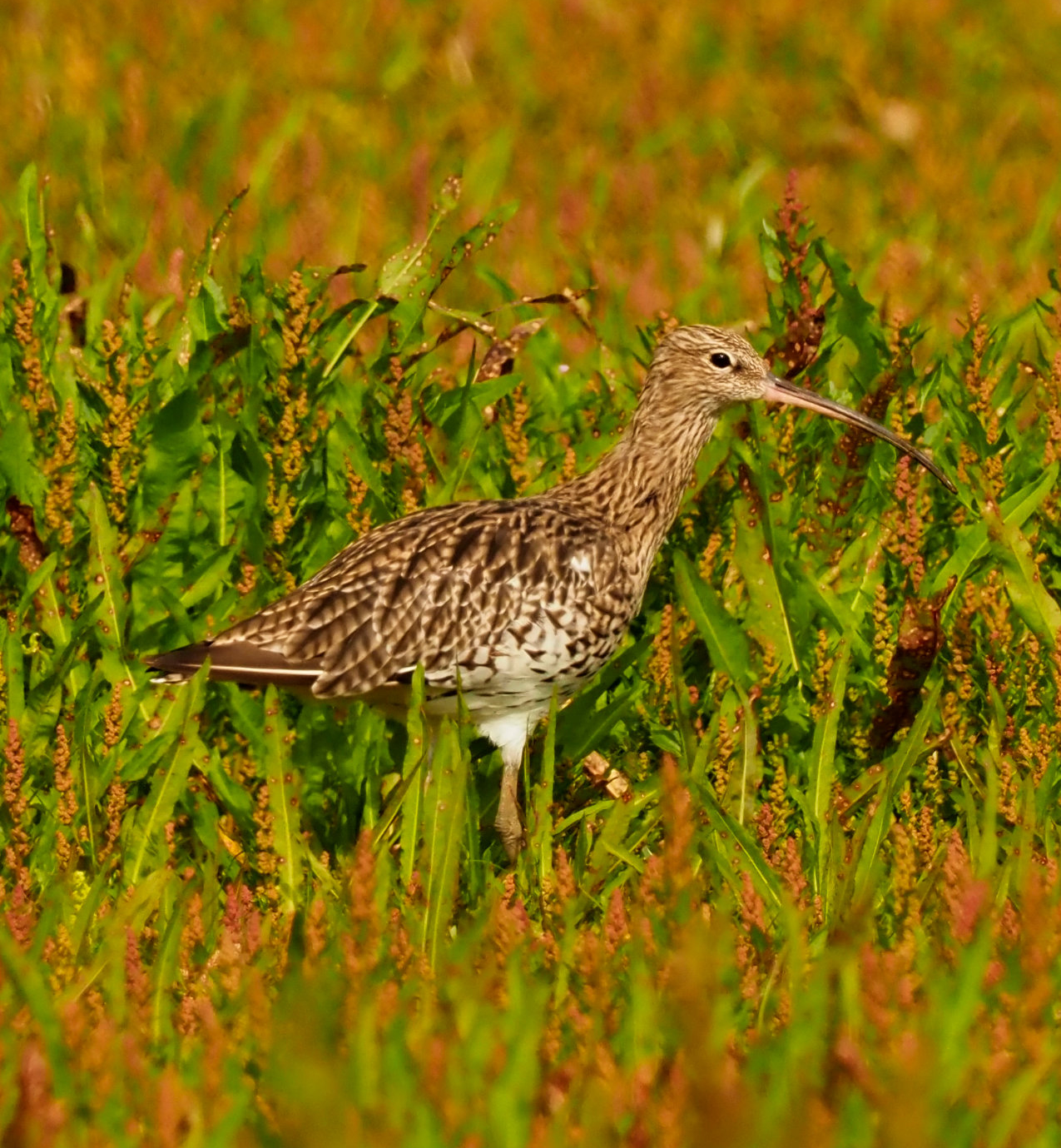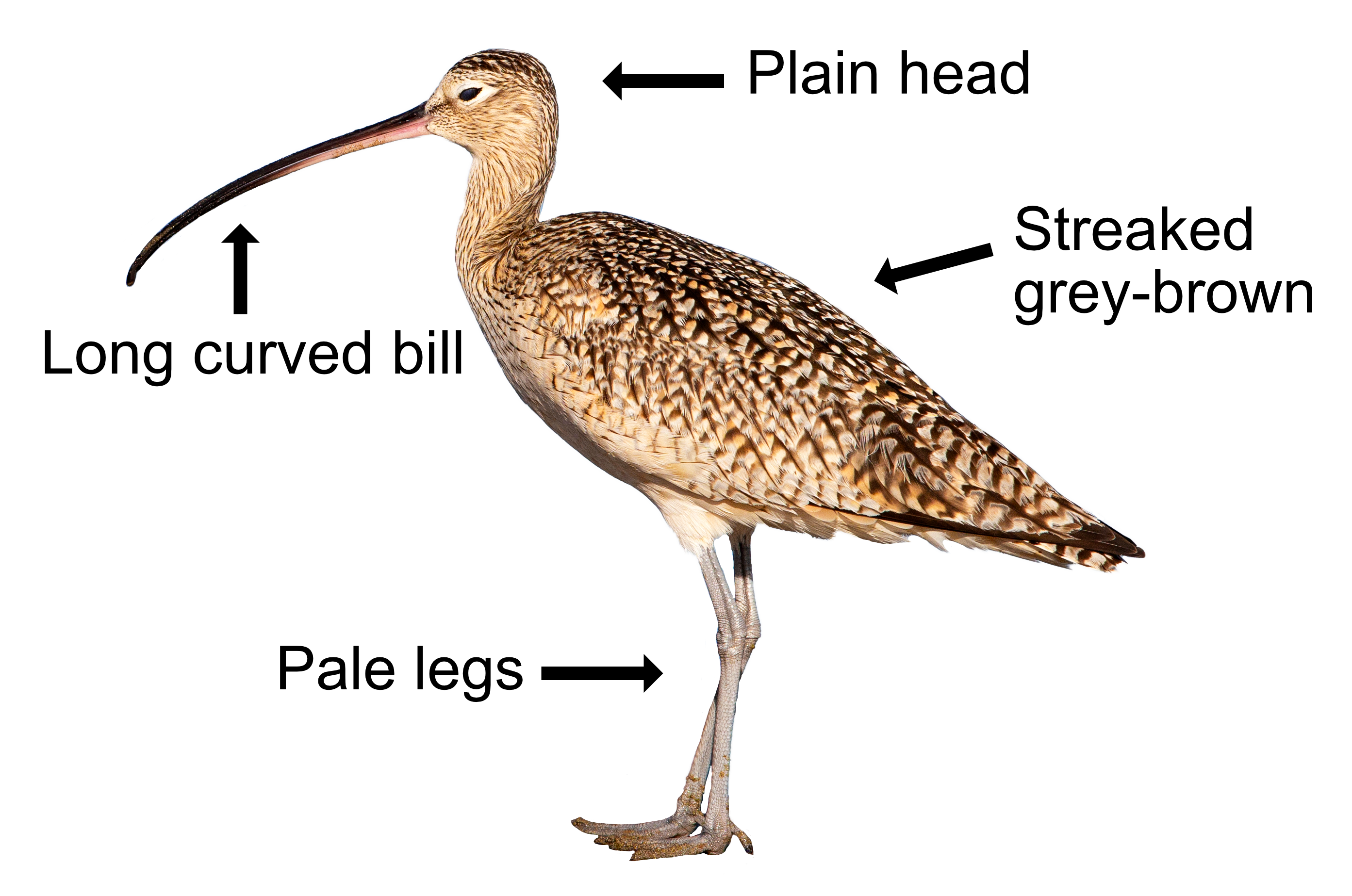
The spooky, lonely, bubbling “curloo-oo” call of the Curlew can be heard on winter estuaries and summer moors. It is what gives the Curlew its name. It is our largest wader and has a distinctive long down-curved bill. Curlews breed in Scotland and even more arrive here to overwinter. Not to be confused with the Whimbrel, which is rarer, smaller and has a more stripy head.
The Curlew is grey-brown with darker streaks, a plain head, straw-coloured legs and that long, elegant, down-curved bill. The female’s bill is longer than the male’s. In flight, they have a pale V-shape on their rump and the outer wing feathers are darker than the rest. The flight is fast and like a Gull.
Curlews feed on worms, crabs and other marine insects, caught by probing. They eat most food whole and regurgitate indigestible bits as pellets.

About 65,000 Curlews breed in Britain from the Pennines northwards. They like to nest on rough grasslands, moorlands and bogs. The male marks his territory with an undulating display flight ending in a parachute glide. He will make several scrapes on the ground. The female chooses one and lines it to her satisfaction. The clever Curlew often builds its nest close to a Kestrel’s, as the Kestrel will see off any predators like foxes. In April or May, 2-5 eggs are laid and hatch after 27 days. The youngsters feed themselves and are cared for by both parents. They can fly after 32 days. Mum usually clears off before the kids can fly, leaving them with dad as she needs a well-earned break from all that child-rearing. Dad and the kids follow later.
Most British breeding Curlews head to southern Europe for winter, being replaced by large flocks of Curlews from Scandinavia. As many as 150,000 pairs overwinter here, mainly on the coast. The overall number of Curlews is falling because of the loss of breeding grounds by drainage or forest planting. In the last twenty years, the number of Curlews has halved. Farmers are now helping through stewardship schemes to protect the breeding sites. The UK breeding population of Curlews is of international importance and they have been added to the Red List, the highest priority for conservation. The oldest known Curlew lived to 31 years old.
Their Latin name is ’numenius arquata’ where ’numenius’ is from the Ancient Greek ’neos’ for ‘new’ and ’mene’ for ‘moon’, referring to their crescent-shaped bill, and ’arquata’ is derived from the Latin ’arcuatus’ meaning ‘bow-shaped’, again referring to the shape of the bill. In Scotland, Curlews are also known as ‘the whaup’.